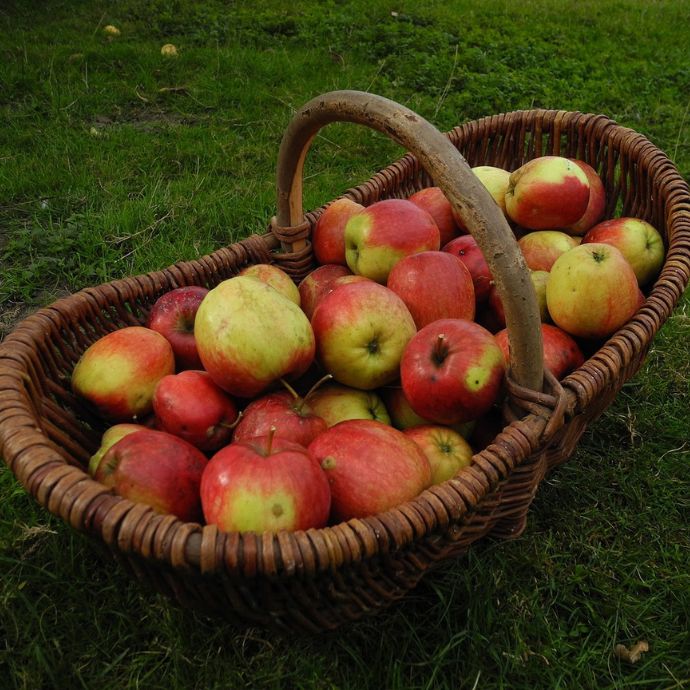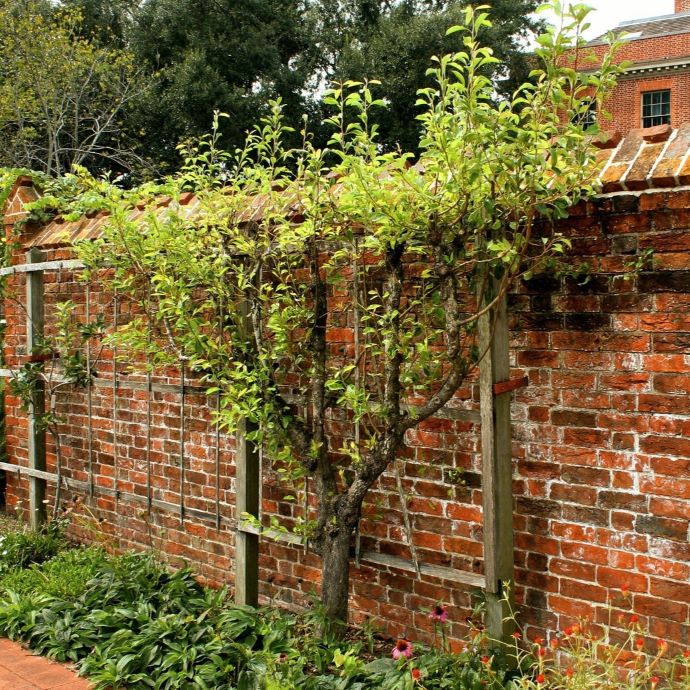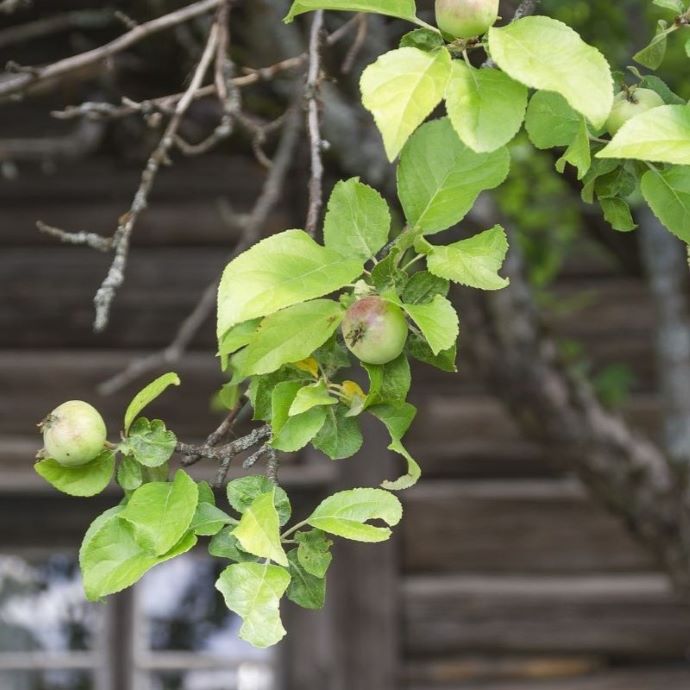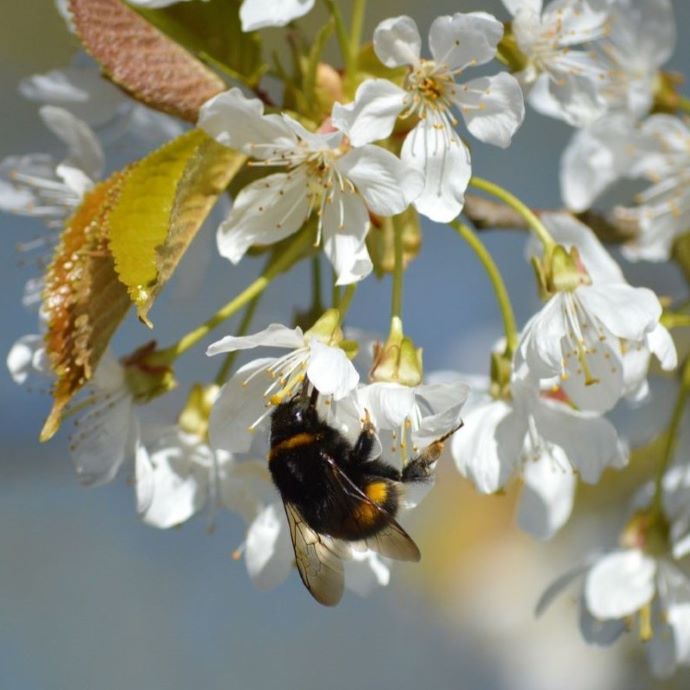Advice & Inspiration
What Did the Romans Bring to Britain's Gardens?

The Roman Empire. Considered by many to be one of the greatest empires of all time, spanning both centuries and continents alike, and delivering cultural, technological and societal innovations, the remnants of which can still be seen today. The Romans first “visited” (cough, invaded) Britain in AD 43, and went on to establish themselves for almost 370 years in total, creating cities at London, Bath and Colchester, to name just a few.
They brought public baths, roads, the widespread use of coinage, a centralised government, and they also brought plants. Lots of plants. In this post, we’ll be looking at how the Romans changed Britain’s horticultural landscape for the better, so get yourself a large glass of vinum and scratch that historical itch.
Jump to:
- The Roman invasion
- Lavender
- Box
- Grape vine
- Herbs
- Apple
- Other plants
- Other Roman influences on our gardens
The Roman invasion of Britain
Now, we know you want to get straight to the plant-y bits, but it’s worth understanding the broader historical context of the Roman invasion to appreciate just how transformative their centuries-long sojourn across the English Channel really was.
Under the orders of Emperor Claudius, Roman troops landed (it’s thought, though not known for certain) at Richborough, in Kent. Over the next 40 years or so, the Romans conquered southern England, northern England and Wales, encouraged the spread of Latin and set up a grand municipal centre at what is now St. Albans.
In short, they did a heck of a lot in (relatively speaking) not a lot of time. This was a period of immense flux and transition in British history, and would serve as one of the primary foundations upon which the nation continued to build, even after the Romans had left the country.

Plants brought by the Romans
Alongside the overflowing amphoras of wine and rabbits(?!) that the Romans brought with them, they also brought a whole host of plants we grow and love today. While few Roman gardens have been excavated, it’s thought that most of their gardens were situated in enclosed courtyards, surrounded by a peristyle (continuous porch of columns).
Lavender (Lavandula angustifolia)
The name lavender comes from the Latin verb lavare, which means to wash (one of the ways Romans used lavender was in their baths). Native to Mediterranean countries like Italy and Spain, lavender was used by the Romans in a variety of interesting ways, including perfuming their clothes, dressing wounds and repelling insects.

Box (Buxus sempervirens)
Now, if ever there was a word to describe the Romans, it would be formal. Or perhaps ordered. Whether it be the uniformity of their building design, the straightness of their roads and aqueducts or their standardised approach towards currency, the Romans loved things to be neat and proper.
Box is a wonderfully versatile shrub that can be clipped into all manner of formal shapes. Writing in Historia Naturalis, renowned Roman author, Pliny the Elder, said this of the plant: “Box-wood is esteemed for a certain toughness and hardness and for its pale colour, while the tree itself is valued in ornamental gardening.”

Grape vine (Vitis vinifera)
Undoubtedly the best-known Roman horticultural introduction to Britain was the grape vine (and, in turn, the art of winemaking). Recent archaeological evidence indicates that there was a Roman vineyard in Cambridgeshire, while an academic study from 2000 argued that the Nene Valley, in Northamptonshire, was a viticultural hub during the Roman occupation.
While wine production declined after Rome’s withdrawal from Britain – a result of various factors, including an inclement climate and political turmoil – the principles and infrastructure established by the invaders persisted for many centuries to come. Winemaking enjoyed a particular resurgence in popularity during Tudor times.

Various herbs (rosemary, fennel and thyme)
Rosemary (Salvia rosmarinus), fennel (Foeniculum vulgare) and thyme (Thymus vulgaris) were all herbs brought over to Britain by the Romans. From providing gladiators additional strength to bolstering memory, these herbs were also used for their culinary properties in much the same way we might do today. For instance, many of the recipes featured in Apicius, the great Roman cook book, make use of thyme (“sprinkled hare”, for example).

Apple (Malus domestica)
While wild apple trees are thought to have grown in Britain pre-Roman invasion, the Romans were the first to purpose-cultivate apple orchards that yielded large, sweet apples. Interestingly, there was a lull in apple production after the Romans departed, only to be picked up again many hundreds of years later, when the Normans came to Britain. Apples were a common ingredient in Roman recipes, with perhaps the most well-known being “Minutal Matianum” – Roman pork with apples.

Other plants
Among some of the other most notable plants the Romans brought over are the sycamore and elm and walnut trees, all of which continue to grow on our shores to this day. Figs were also introduced by the Romans, and enjoyed by both layperson and noble alike.

Other Roman influences on our gardens
Roman influence on our horticulture extended beyond merely the plants themselves that were brought over. Other trends included the use of water features, geometric garden layouts and the concept of the kitchen garden.

Final thoughts
To quote Monty Python – because who needs an excuse to reference Monty Python – “What have the Romans ever done for us?” Well, the answer, as it turns out, is a bloomin’ lot! We may not think of gardens when first pondering Roman innovations in Britain, but their influence is unmistakable. So, next time you’re trailing your hand through a drift of lavender, eating some delicious grapes or taking in the splendour of a stately home’s manicured garden, you know who to thank…



























